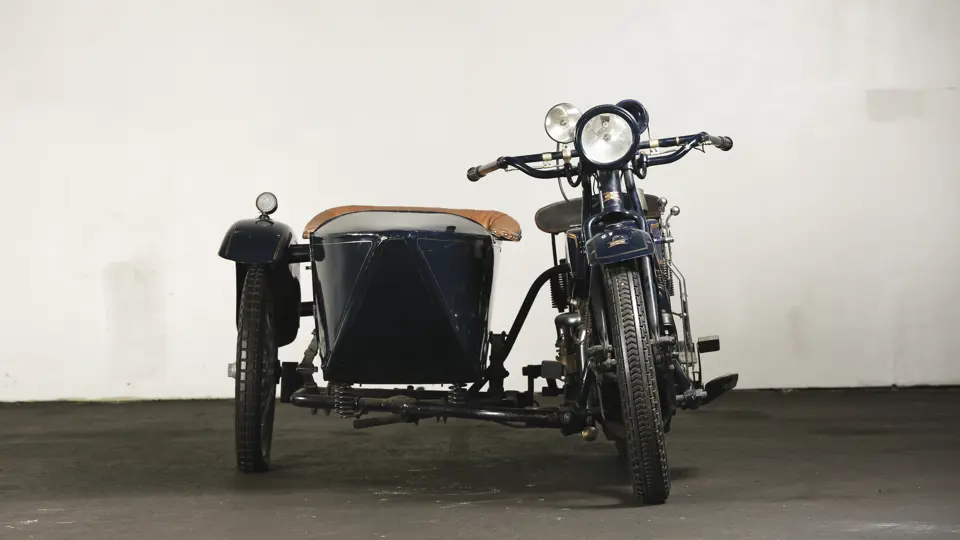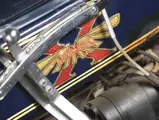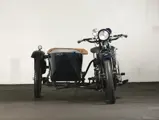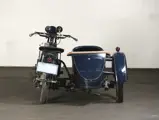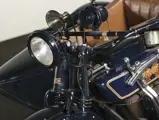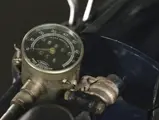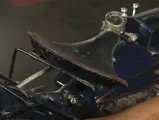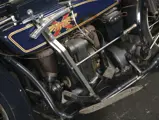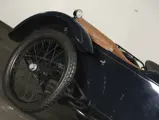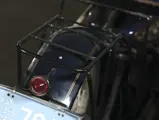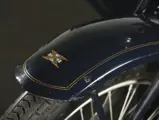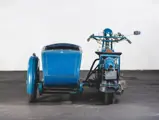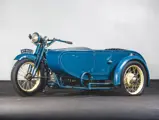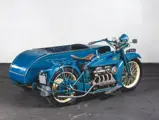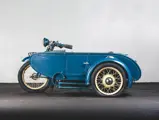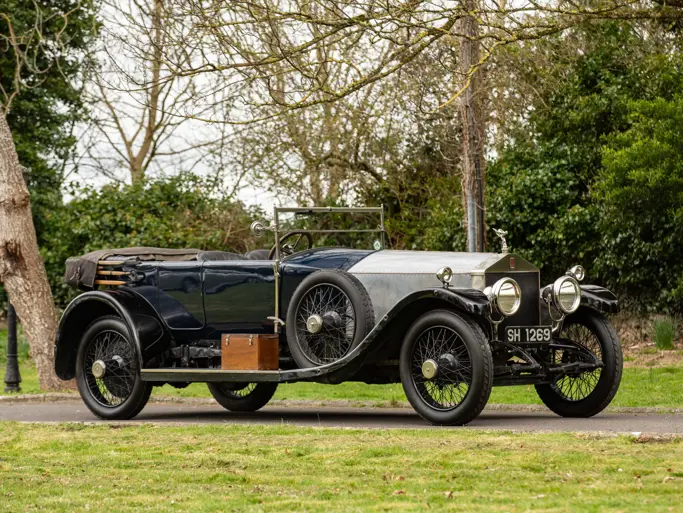28 bhp, 1,300 cc air-cooled longitudinal inline four-cylinder engine with a mechanical inlet and exhaust valves, full pressurized lubrication, final chain drive to the rear axle, trailing-link fork front suspension, solid unsprung rear axle, and front and rear drum brakes. Wheelbase: 59 in.
Although first appearing in 1912, it wasn’t until the following year that Carl Stevens Clancy put Henderson into the history books for becoming the first person to circumnavigate the world on a motorcycle. The luster of the Henderson Four would continue to shine brightly more than a century later.
Brothers Tom and William would part ways with the company when it was absorbed in 1917 by Ignaz Schwinn, of bicycle fame and also the acquirer of the Excelsior motorcycle company. That same year, a Henderson smashed the longstanding Cannonball Baker cross-country record by nearly four days, further cementing the marque’s prestige. Even Henry Ford bought one. Production continued until the sun set on the Henderson Four in 1931.
The Henderson De Luxe was introduced in 1922, and at that time, it was considered the most refined model they had yet to produce, further ensuring the growth and prosperity of the Henderson name. The 1,301-cubic centimeter, 28-horsepower machine was also a winner with police departments. As it was capable of 100 mph, they were able to beat out the Harley police models during a famous 1922 Chicago “shoot-out.”
This exceptional example is also fitted with a matching “chair,” as produced by Goulding, the Detroit company that is considered to be the first American sidecar company. It wears the correct blue color as the Henderson, and they both proudly wear an earlier, quality restoration. The overall condition of this stellar machine, formferly of the Art Sigal Collection, is primed for easy up and running.

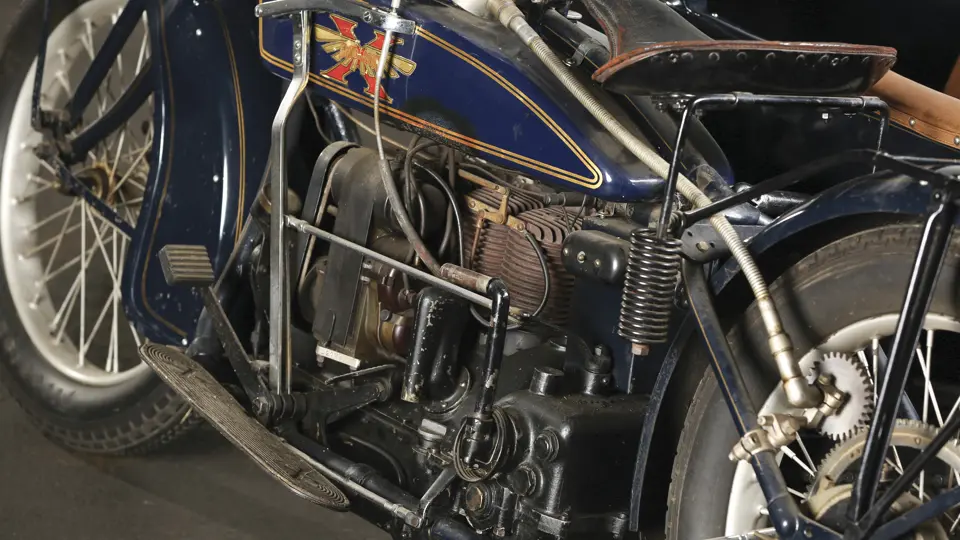
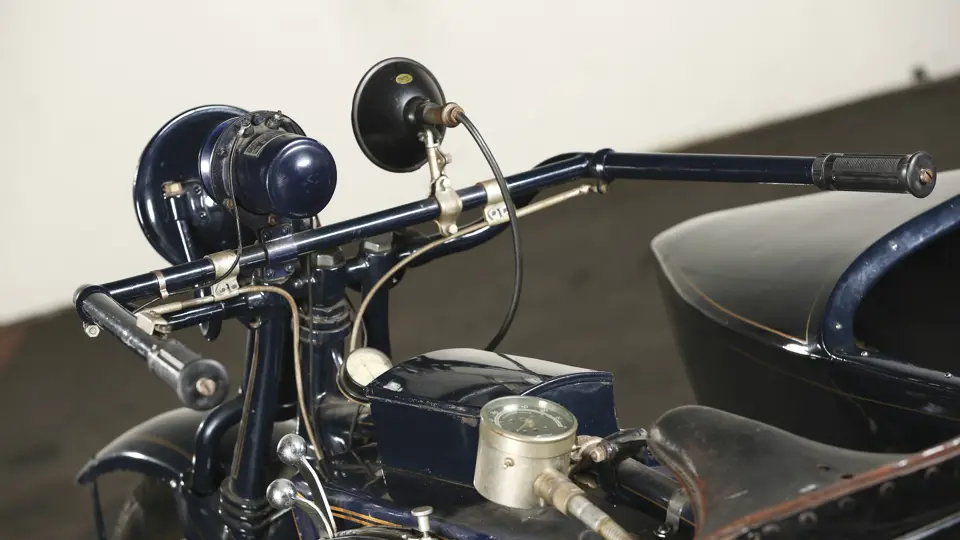

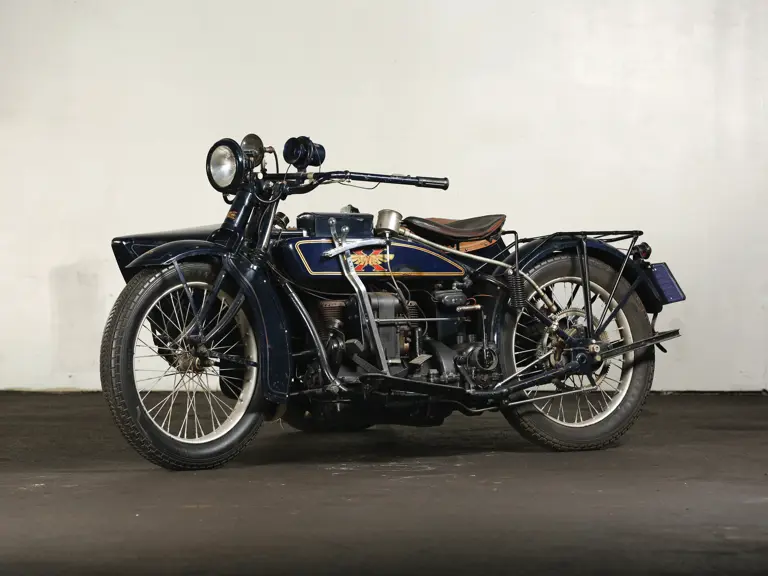


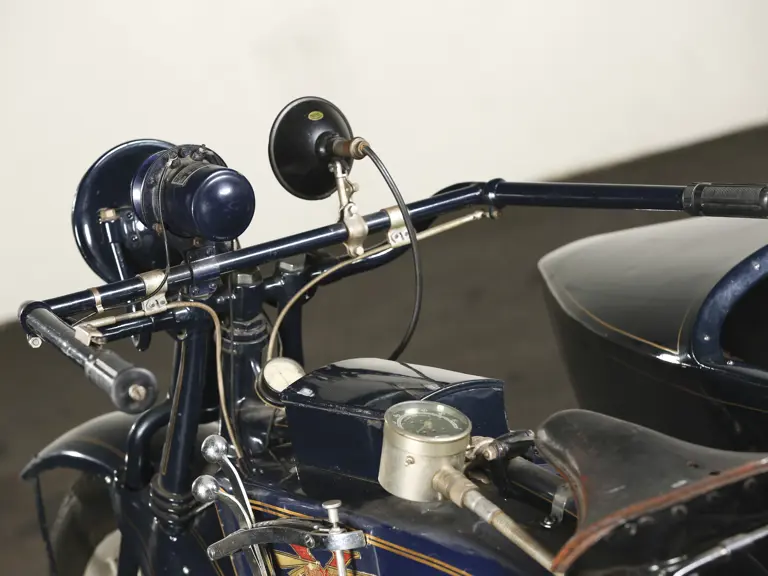

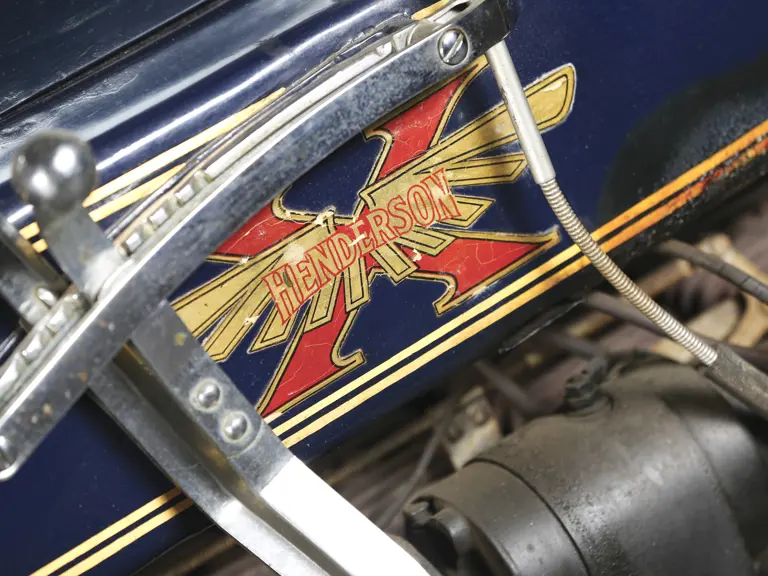
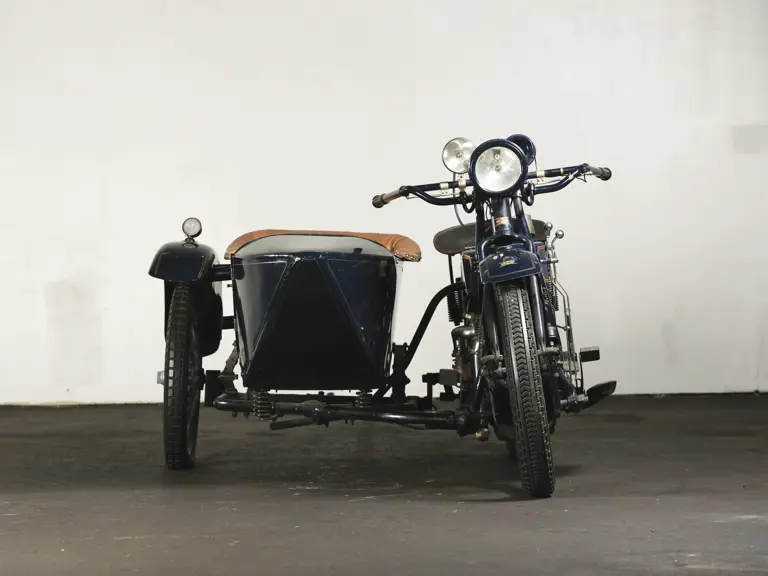
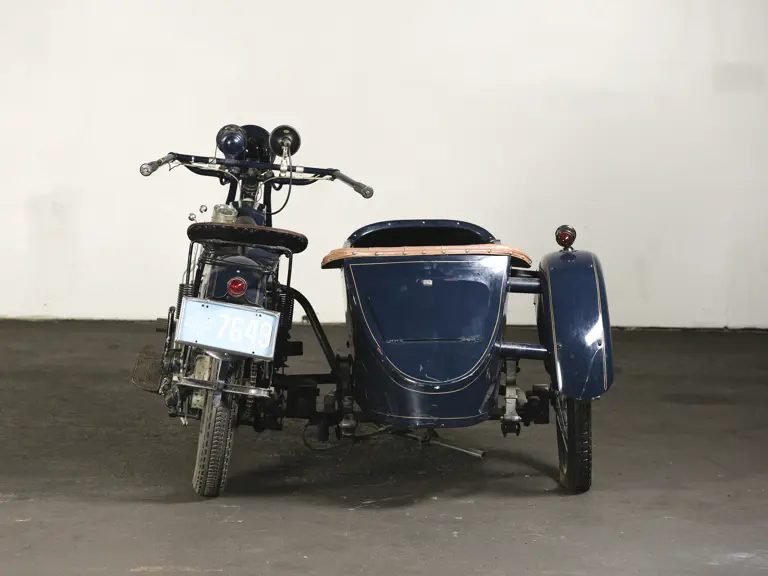
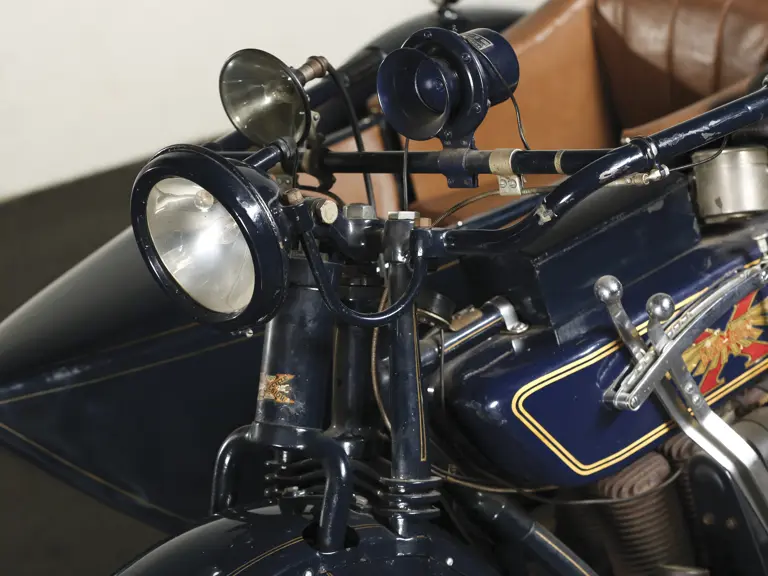
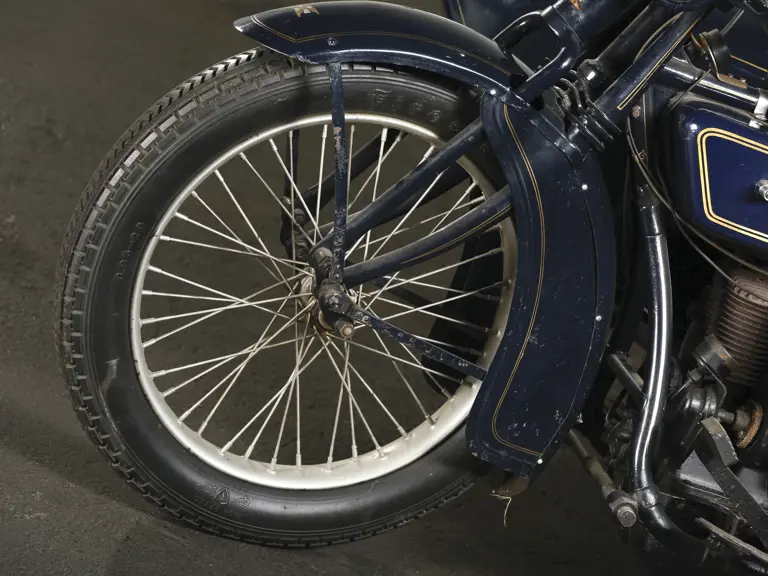

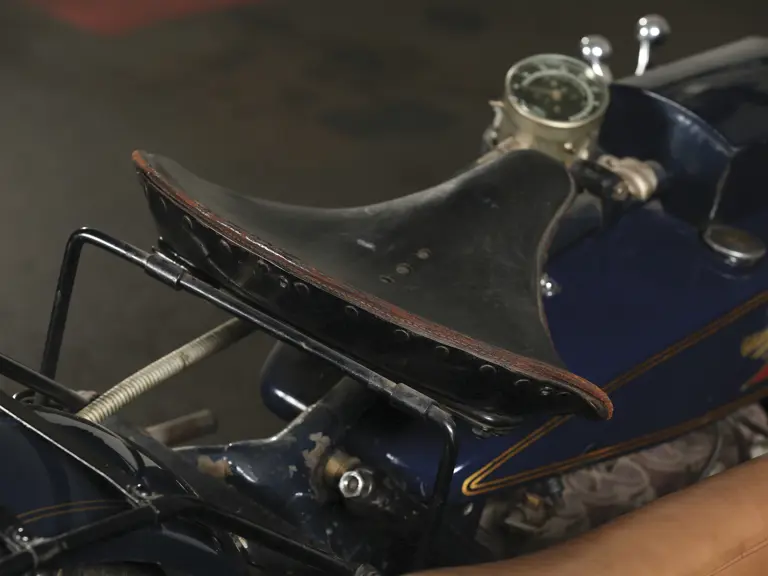
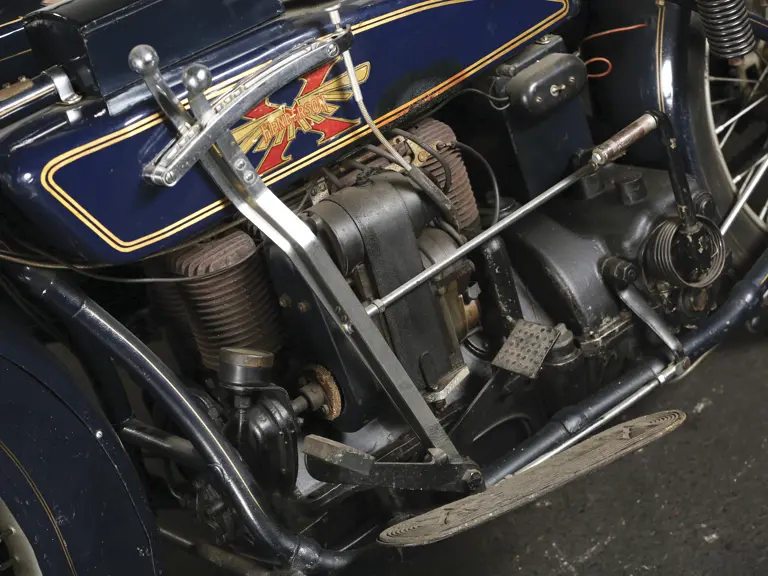
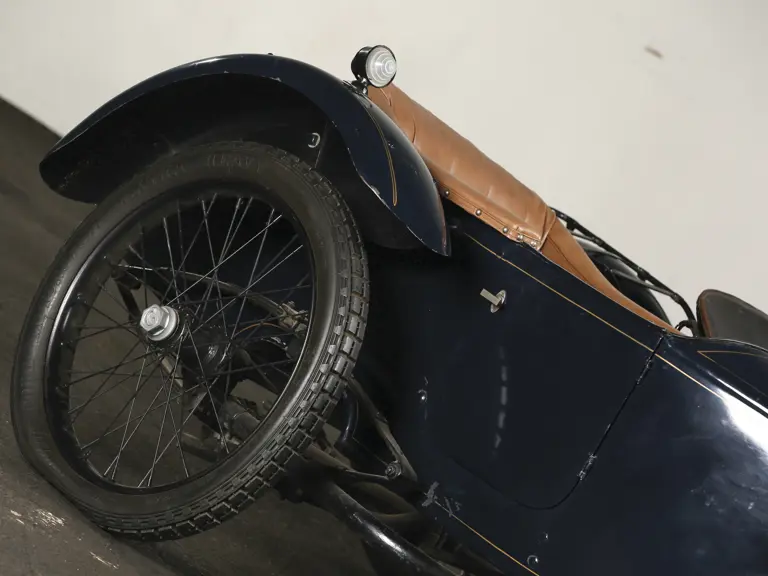
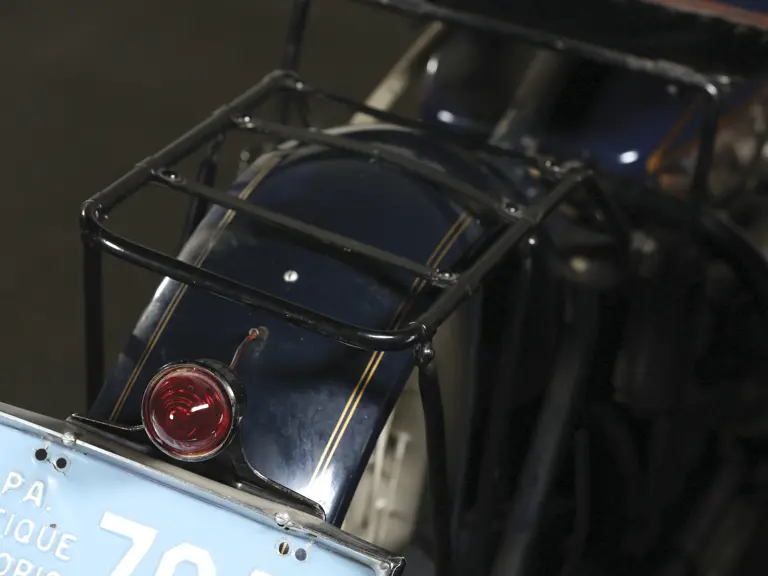
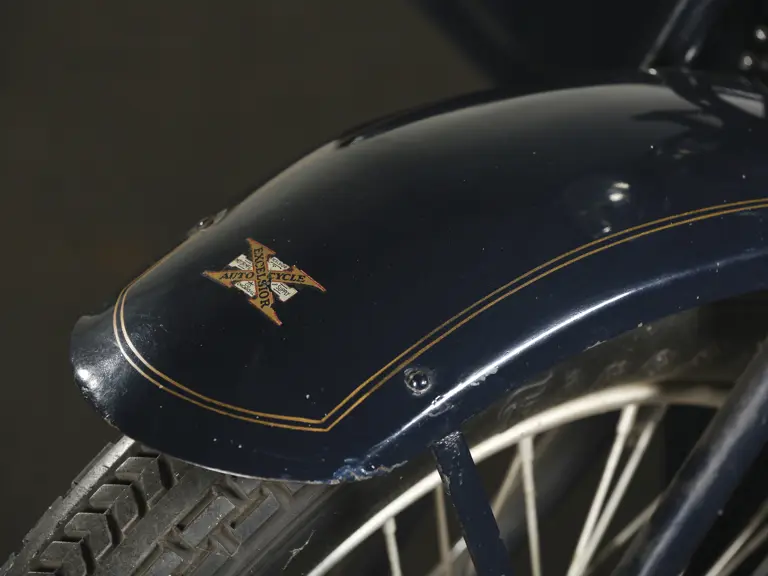
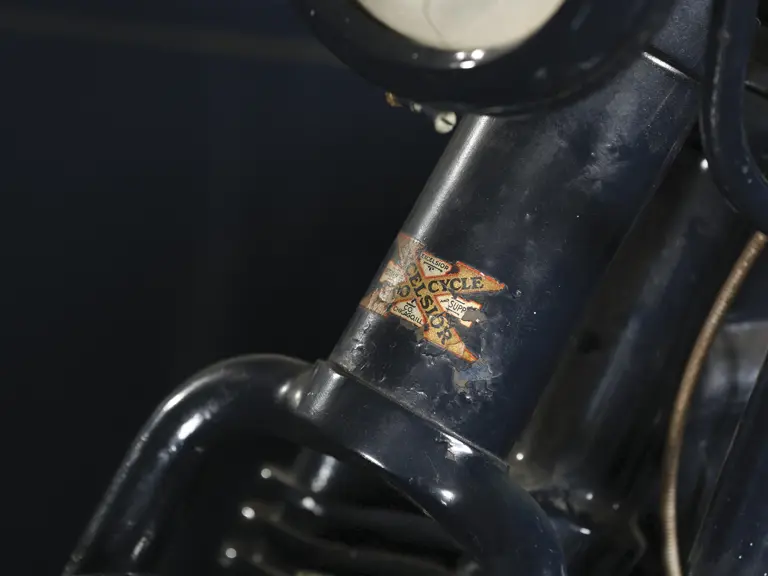
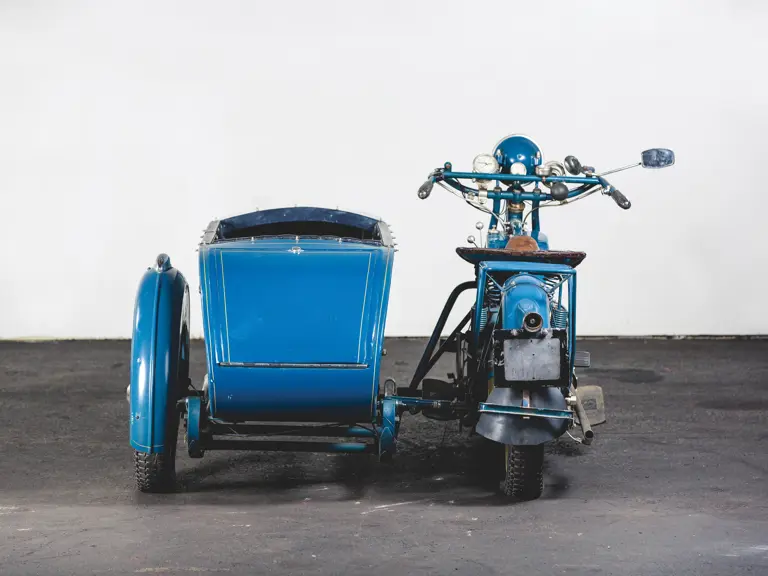
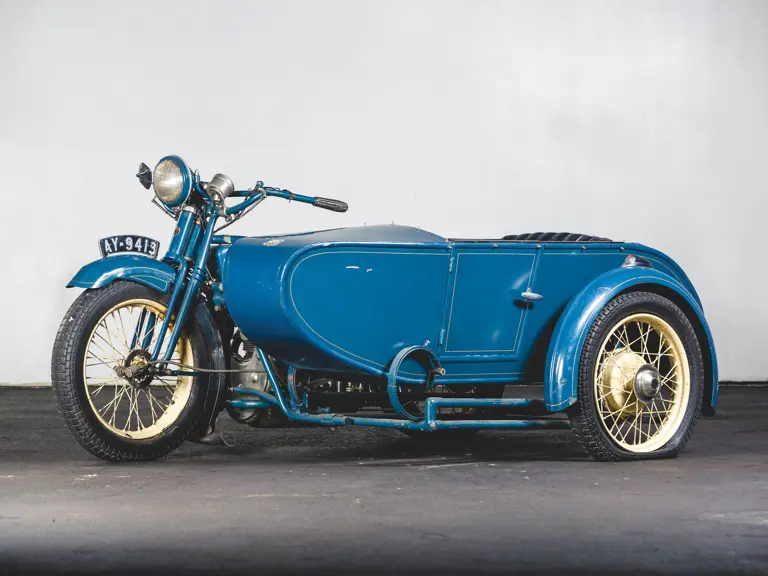
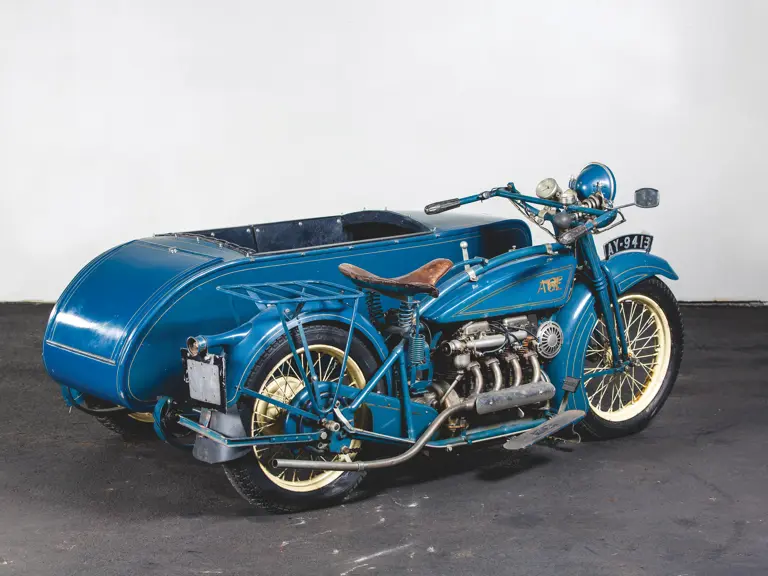
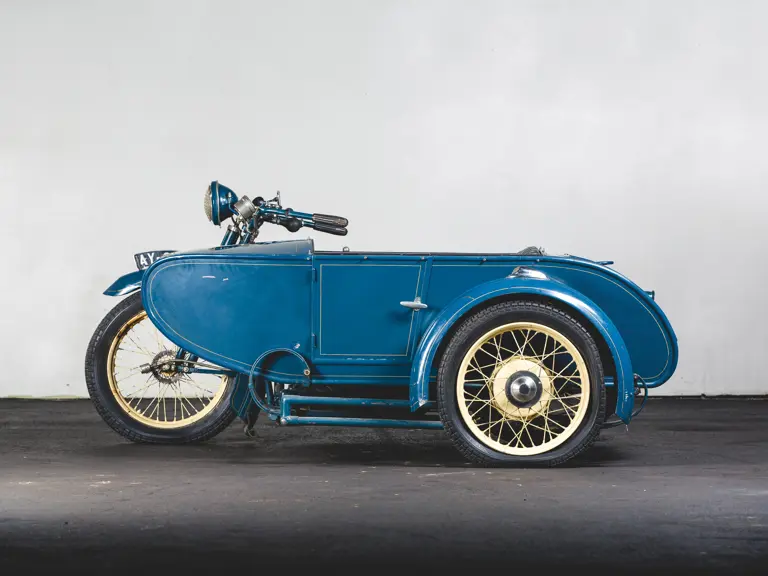

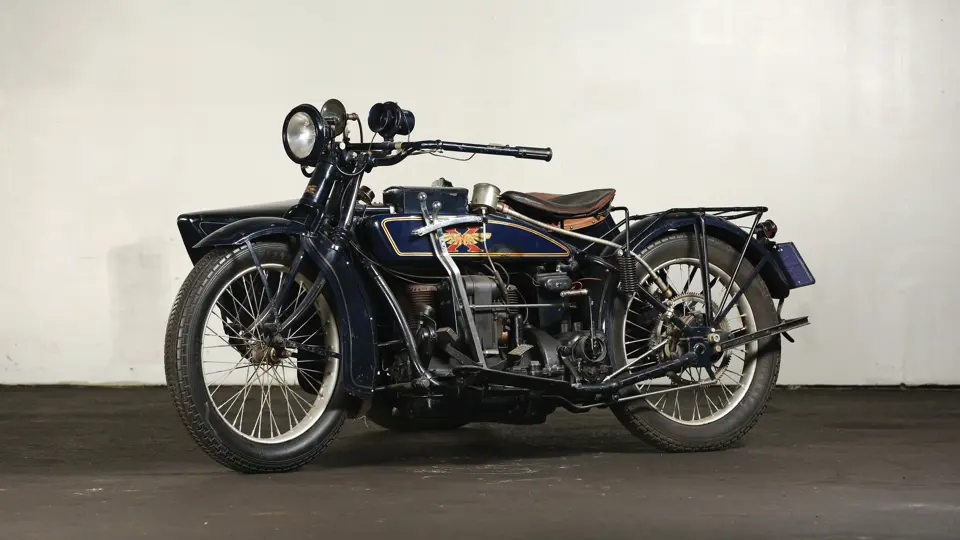
 | Hershey, Pennsylvania
| Hershey, Pennsylvania


